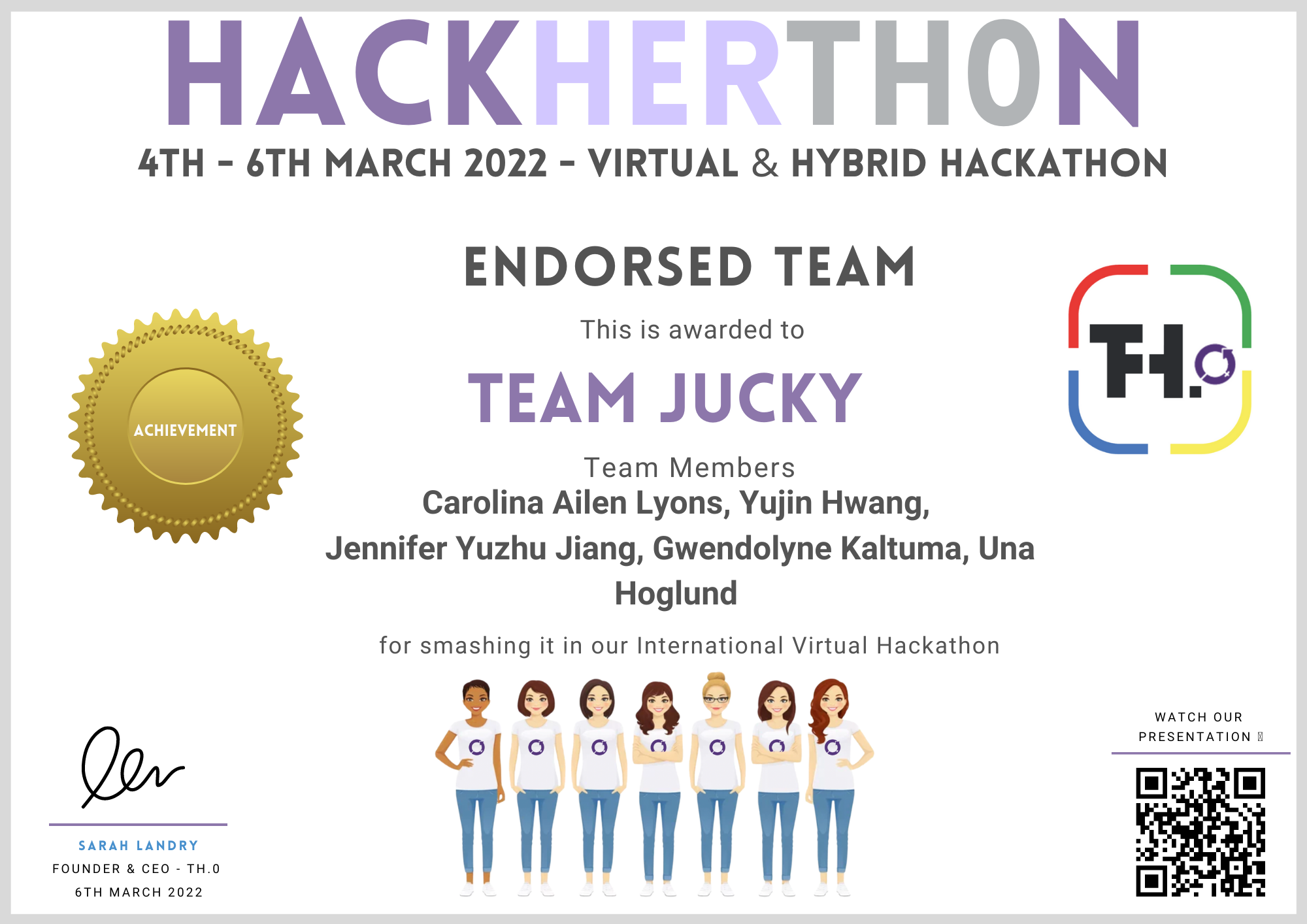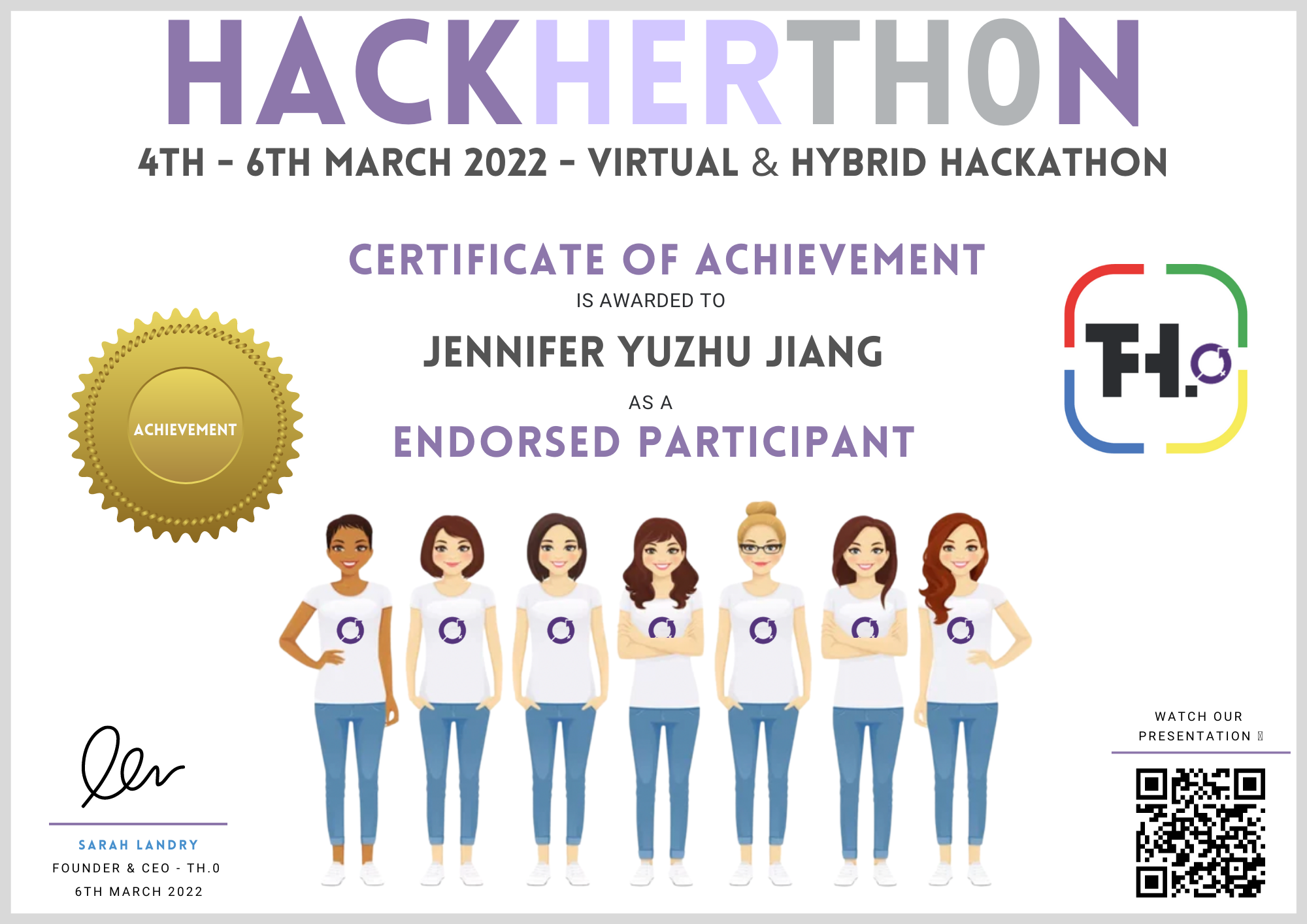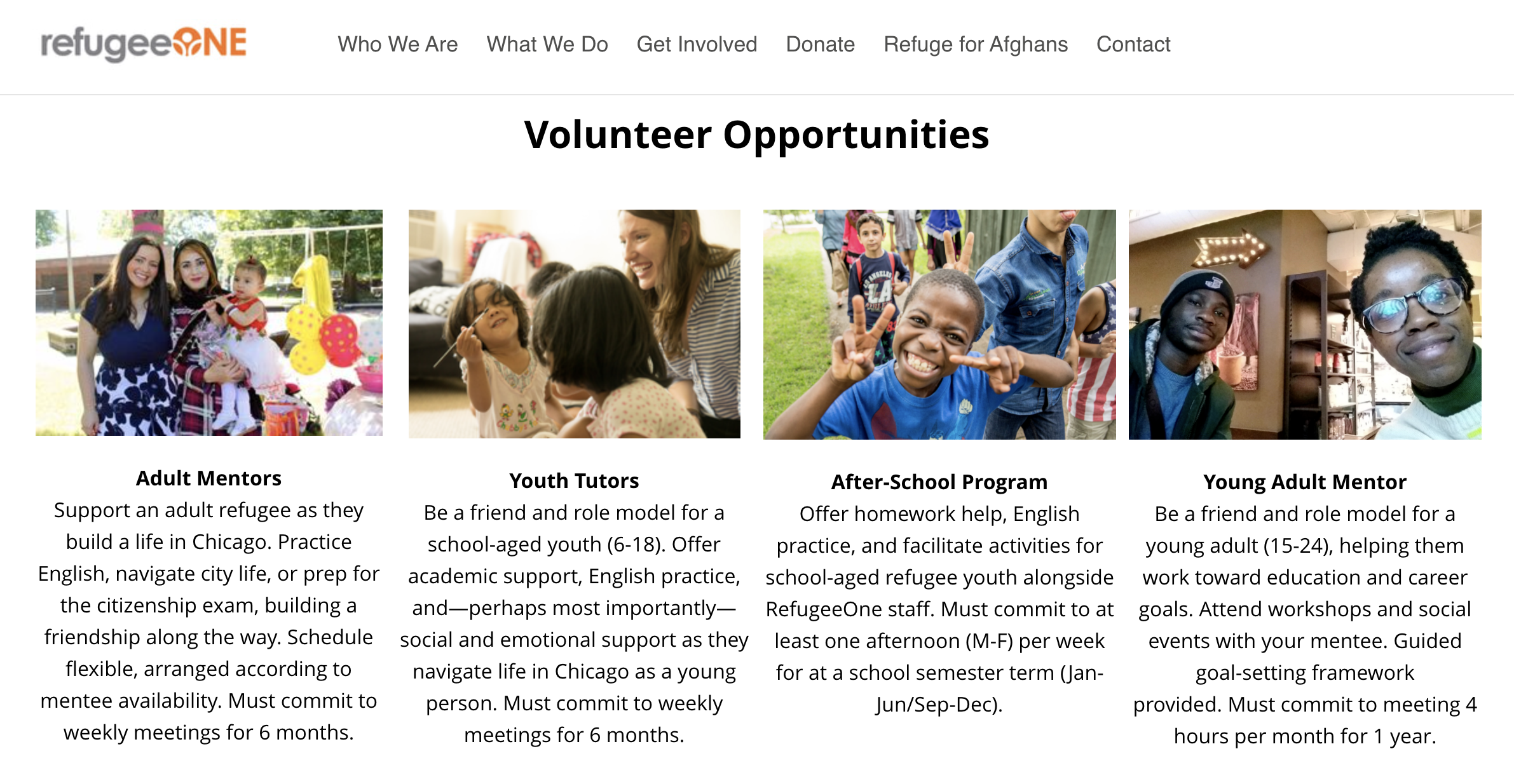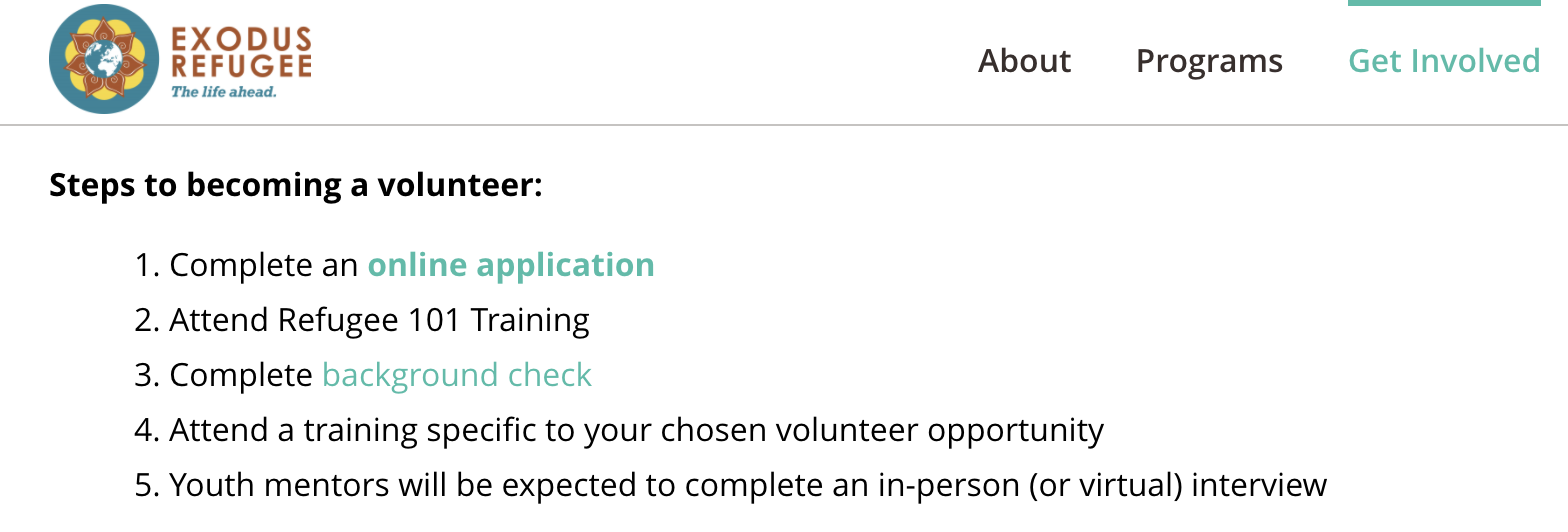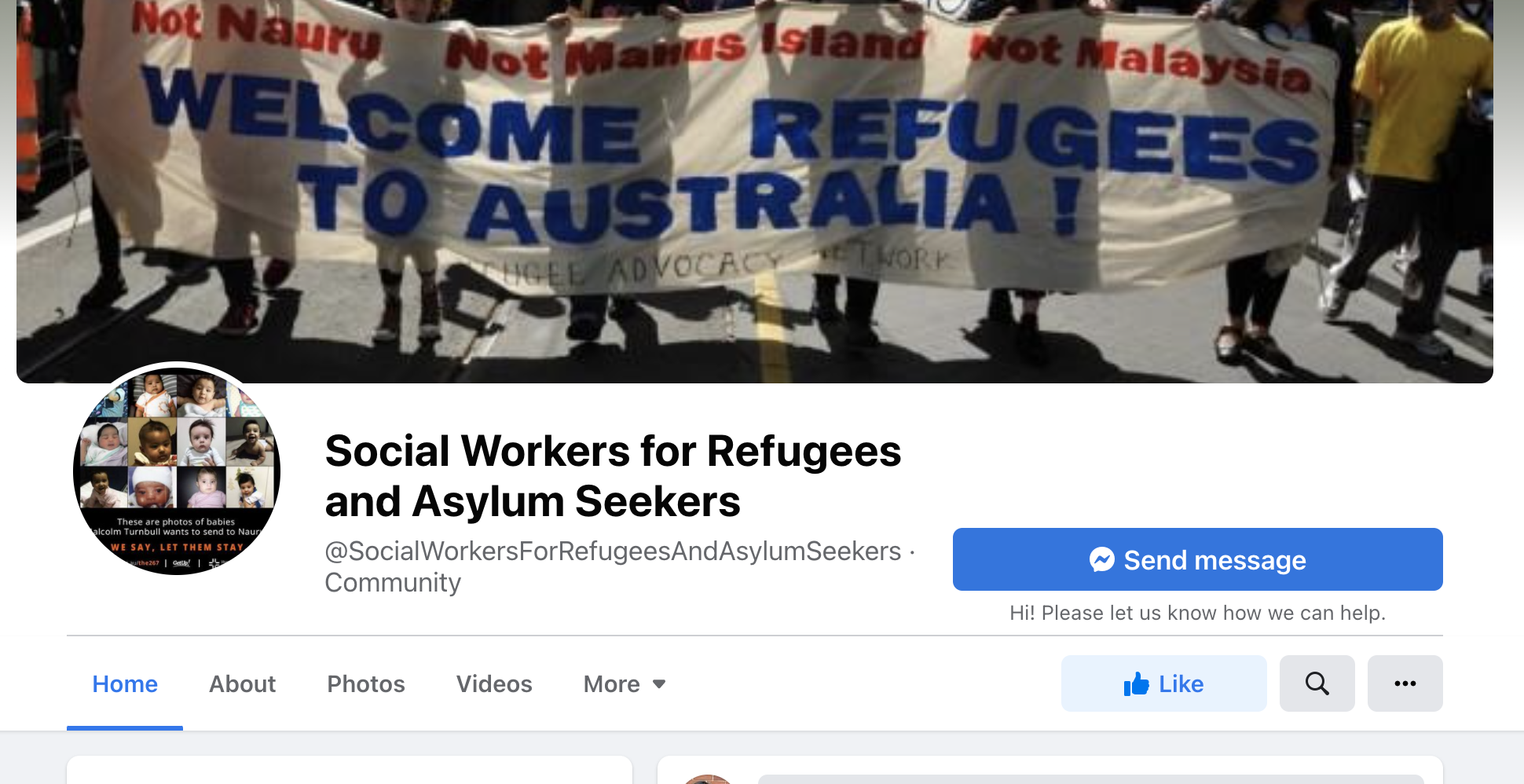Seek refuge, navigate life, and integrate smoothly in your host country with knowledgeable local friends who are eager to help.

Project Overview
Hackathon Background
This was a project for HackHERthon 2022 hosted by TH.0, based in the U.K. HackHERthon is an international virtual hackathon on March 4th-6th, 2022, celebrating International Women’s Day. My teammates came from the US, Germany, Argentina, and Africa.
My Role
I served the role of Product & UX/UI Designer and Project Manager. I guided two other designers, a developer, and a marketing student to create our persona, prototype, and the first version of code. I conducted research and made our business case, sketches, and pitch.
Challenge
“With millions of Ukrainian refugees, we are looking for a swift short and long-term integration solution in which, especially women and children who are fleeing their cities at unimaginable risks can be resettled and integrated into welcoming communities with ease."
Timeline
48-hour Weekend Hackathon
Problem Statement
I wrote the problem statement for our team: “Ukrainian women and children need a way to navigate a new life in their host countries smoothly and efficiently so that they escape conflict, stay safe, have adequate resources, and integrate into their new societies.”
Skills & Tools
Project Management, Business Strategy, Internet & User Research, Ideation, Competitive Analysis, Business Analysis, Personas, Sketching, Wireframing, Interaction & Visual Design, Prototyping, Figma, Presentation Skills
Solution
I came up with our team’s idea of a mobile app to connect refugees with volunteer "buddies". These would be locals who help refugees integrate by navigating areas such as housing, legal services, healthcare, education, language, and culture.
Goal & Outcome
Refugee Buddies aims to produce a positive humanitarian ROI for NGOs or entities such as the UN Refugee Agency. It would save costs of integration and boost the economies of host countries by allowing refugees to become contributing members of society faster.
Watch my pitch presentation and prototype walkthrough.
I made this video for my team’s hackathon presentation, illustrating the business case for Refugee Buddies and walking through the user flow and functionality of our prototype. After viewing the video, you can scroll through the details of our process.
Process Overview
1. Understand
Team formation & challenge decision
Internet research on the 2022 Ukrainian crisis
User research on needs of Ukrainian refugees
Competitor research on current apps to solve Ukrainian needs
2. Ideate & Define
Develop ideas and vote
Define specific problem and solution
3. Analyze
Competitor analysis of existing solutions for the specific idea
Define categories of areas that volunteers can help with
4. Execute
User persona
Sketches
Wireframes
Prototype
Development
Business case creation
Pitch presentation
Understand
We divided up into Hackathon teams based on challenges. Our team of 5 chose Challenge #2- Marginalized Communities- Refugee Resettlement and Integration.
We had a day to solidify our teams, choose our challenge, and come up with an idea to respond to the prompt.
I started by doing quick internet research on the Ukrainian crisis and refugee migration.
Russia invaded Ukraine on February 24, 2022, displacing millions of Ukrainians to flee to neighboring countries. Refugees most commonly traveled to Poland (50% of refugees), Hungary, Moldova, Slovakia, and Romania. It’s the most rapidly growing refugee crisis since the second world war.
To generate ideas, I researched everything that refugees need in order to resettle and integrate into new societies.
What do they have to do once they arrive in neighboring countries such as Poland? What are the basics they need to survive, and what help do they need short and long-term?
The scope of our idea was to focus on one solution or one aspect, so I generated a list that we could develop ideas from.
Short Term Needs:
Emergency shelter
Relief items such as blankets and emergency payments
Medicine and medical care for wounds
Food and water
Donations
Long Term Needs:
Community support
Long term housing
Mental health care and trauma processing
Social welfare
Schooling for children
Legal services
Jobs/employment
Formal pathways to legal statuses, such as asylum applications
Legal services
Healthcare
Covid-19 vaccine (the vast majority of Ukrainians aren’t vaccinated)
Needs for Women:
Sexual and reproductive health services
Psychosocial support and trauma counseling (women and children are especially vulnerable)
Hygiene kits and clothing
Shelters specifically for women and children
To generate ideas, I searched current technology solutions and apps to common Ukrainian needs.
Below is a list that I found of common apps that exist in the marketplace. I would use these apps so that my team and I could come up with our own solutions.
2. Ideate & Define

We generated a list of ideas based on the needs of refugees and current apps on the market.
We voted on the ideas by placing our name next to the one we favored. The list of ideas and # of votes are shown on the left. The ones I added are in bold.
3 out of 5 people chose my solution for “matching refugees with ‘buddies’ or ‘mentors’ that help them navigate life in their host countries”. This was now our adopted idea for the hackathon.
Short-term resettlement: Couchsurfing/Airbnb for refugees- connecting refugees with locals who are willing to offer up extra space in their home. Can have search and filter/match features for how many people, how long, the location, etc. (1)
Longer-term solution: Connecting women and children with mental health care providers who offer trauma counseling (1)
Job search app for refugees
Matching refugees with “buddies” or “mentors” that help them navigate life in their host countries (3)
Central hub where refugees can access information for everything they need (this is not focused on one aspect, however)
Job training search platform
Donation portal where locals can donate goods and services or money to refugees
Adopt flexible case processing modalities to increase the agility and resilience of resettlement and admissions under other legal pathways.
Connect with a social worker to help you through the process of settling in a new country, find housing, a job, a school (if applicable) and assist you through the legal process.
We decided to focus our core users on Ukrainian women and children for the hackathon theme. We also decided that our platform would be a mobile app, as fleeing refugees are more likely to have access to mobile phones than desktops.
I wrote a problem statement to define the problem our adopted idea would solve and a solution statement that describes the product and hypothesizes its benefits.
We called our app Refugee Buddies.
Problem: “Ukrainian women and children need a way to navigate a new life in their host countries smoothly and efficiently so that they escape conflict, stay safe, have adequate resources, and integrate into their new societies.”
Solution: We believe that by creating a mobile app to connect refugees with volunteer "buddies", Ukrainian women and children will integrate into new societies easier and faster with the help of friendly and supportive local volunteers.
3. Analyze
For competitor analysis, I researched current refugee volunteer programs in the U.S. and Europe to see how they were structured. You can see a select few listed below (scrollable).
I found that there were refugee volunteer programs offered by nonprofits, local cities and governments, and churches, which often had strict and lengthy volunteer requirements. There were also peer-to-peer Facebook groups and apps for individual services such as translation. However, there were no existing mobile apps specifically for peer-to-peer comprehensive refugee partnerships— giving us room to move into this space and differentiate.
I envisioned the app could provide a capability to search and filter Buddies by areas of specialty and type of help. We determined these categories based on my research of refugee needs and competitive analysis of other volunteer programs.
4. Execute
For the second half of the hackathon, I divided up work amongst the team, and we made deliverables to turn into our Google Drive.
We created a user persona for a Ukrainian woman refugee with children to help us understand her perspective, needs, goals, and frustrations.
I taught a marketing student on our team how to make a user persona, and she drafted a copy. I made edits and created the final version below.
I drew quick sketches to illustrate the flow and functionality.
Refugee enters the country and city in which she is looking to migrate, the areas she needs help with, as well as the age and gender of the buddy in case she wants a friend at the same stage in life.
Refugee enters the Buddies screen, where she sees a list of buddies based on her search results.
Refugee clicks on a buddy from the Buddies list and sees details of the buddy including name, location, age, areas of specialty, and description.
Refugee can view her personal profile which includes the information that she displays to the volunteers.
We made low-fidelity wireframes.
While I made the sketch, my teammate made a Lofi wireframe.
We discussed our sketches and Lofi wireframes and combined our ideas for the flow in our high-fidelity wireframes.
In our overall solution, I envisioned there would be 2 apps to download- one for refugees and one for volunteers. For the purpose of the hackathon, we just showed the flows from the Refugee app.
Based on my sketches and the Lofi wireframes, my 2 teammates made high-fidelity wireframes shown below. I reviewed the wireframes throughout the process and gave direction and suggestions for edits.
Home Screen and Profile Screen- Reading news or posting details on a personal Refugee profile for Buddies to view
Buddies Screen and Filters- Finding a Refugee Buddy based on preferences and needs
Messages Screen- Messaging a potential Refugee Buddy
We turned our wireframes into an interactive prototype.
Our developer worked on the initial version of the code for our app.
One challenge that we faced was a shortage of developers- we only had one developer on our team, and there was no mobile specialists. However, he was able to make an initial version of the code for the app.

Next, I created the business case for our product that we would put in the hackathon pitch presentation.
Our business case was to include the following:
Our differentiators and what makes the product unique
Return on investment and long-term impact of our solution
The business proposition, including who’s going to pay, how our solution would be developed, and how the solution would make money
Implementation plans
I reviewed my competitive analysis to determine several points that make Refugee Buddies unique in the market.
There are no known mobile apps specifically for peer-to-peer refugee mentorships/partnerships
Churches, nonprofits, and local cities offer volunteer programs with stringent requirements for both registration and the mentorship process. A way that Refugee Buddies would differentiate is by offering a more informal way that any local who registers through the app and verifies his/her profile can become a Buddy for a Ukrainian refugee.
Refugee Buddies is easier to access on mobile phones, which is more accessible for refugees than desktop applications
While existing apps provide individual services such as translation, Refugee Buddies provides comprehensive services for the most common areas of help that refugees need. Refugees can even message multiple people for assistance with different services.
Refugees can search and filter potential Buddies for specific areas of specialty.
I researched the economic impact of refugees on host countries to determine the humanitarian ROI of Refugee Buddies.
I found that formal integration services, such as social workers, can be costly. Refugee Buddies will be a way ordinary citizens can volunteer their time for free, saving government and NGO costs.
Refugee Buddies presents a positive humanitarian ROI on society as it helps boost the economy of host countries.
For example, by adding to the workforce and creating jobs, refugees have raised the median income of many host countries. In the U.S., refugees' income are $14,000 higher than the national average within the first 5 to 25 years of resettlement. Refugee Buddies will allow societies to realize this effect even quicker as refugees become contributing members faster.
We discussed our business proposition: who would pay, who would build the app, and how it would monetize.
Our business proposal will be for NGOs such as the UN Refugee Agency or UN Women, local governments that want to support refugee integration in their communities, churches, or a combination of alliances/ partnerships from several organizations.
We would monetize through strategies such as in-app advertisements that are ethical and curated.
The platform would be built by developers that are employed by the entity that adopts our application.
I made an implementation plan for the app. We would launch in Warsaw, and then iterate and expand across Poland (where currently 50% of refugees are fleeing), then worldwide.
I developed a pitch presentation in the last few hours of our hackathon that explained our business case and included a tech demo. You can view the pitch deck here.
Scroll to the top of the page to view a video of the pitch presentation.
I presented a recorded pitch demo at the Hackathon and received great feedback and a certificate.
“Well done! Great presentation... Congratulations on producing such an awesome project.”
